
COLLEGE CODE : MUT
Affiliated to APJ Abdul Kalam Technological University
Approved by AICTE
[email protected] | 0484-2883300/0484-2732100/111
Relentless passion for excellence...
(Promoted by The Muthoot Group)

COLLEGE CODE : MUT
Affiliated to APJ Abdul Kalam Technological University
Approved by AICTE
[email protected] | 0484-2883300/0484-2732100/111
Relentless passion for excellence...
(Promoted by The Muthoot Group)
a. Remediation of Oil Contaminated Soil
Faculty member: Ms. Nishida A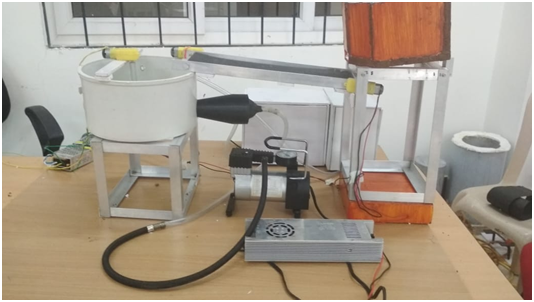
In addition to the environmental problems, oil reduces the shear strength of soil. Many remedial measures are available, but many of them have practical difficulties and not environmental friendly. Therefore attempts are made to remediate the soil in-situ, using microbubble technique. A design layout of microbubble generated oil contaminated soil remediation setup is prepared using an innovative approach and a working model is developed.
b. Remediation of Heavy Metals Contaminated Soil
Remediation of heavy metals contaminated soil involves chemical treatments have its own side effects. Another method is electro remediation which is applicable only to soils with a high content of clay. Another environmental friendly method is the phytoremediation method. Many plants are not able to take heavy metals. Therefore chemical nano materials are added to the soil. Presently attempts are made to use an environmental friendly nano material which is prepared by biosynthesis.
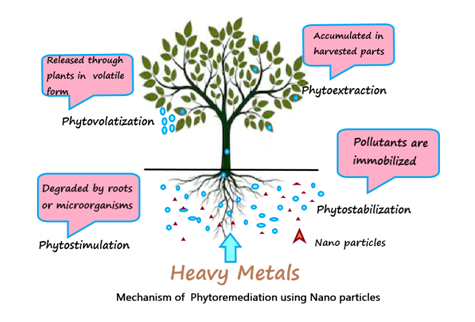
Faculty member: Ms. Mary Lissy P. N.
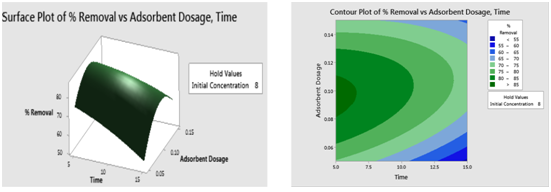
The waste water effluents contains various heavy metals, which are a real threat to the environment and public health, because of their toxicity and persistence in the environment. Contamination of water with toxic metal ions (Hg(II), Pb(II), Cr(III), Cr(VI), Ni(II), Co(II), Cu(II), Cd(II), Ag(I), As(V) and As(III)) is becoming a severe environmental and public health problem. In order to achieve environmental detoxification, various techniques like adsorption, precipitation, ion exchange, reverse osmosis, electrochemical treatments, membrane filtration, evaporation, flotation, oxidation and biosorption processes are extensively used. Among these, adsorption is a conventional but efficient technique to remove toxic metal ions and bacterial pathogens from water.
Performance of the synthesized Alumina- Iron Oxide nanocomposite as an adsorbent in the removal of Cu2+ and Cr (VI) from water has been investigated. The experimental studies revealed that alumina/iron oxide nano composite is less effective in the removal of copper and chromium ions from wastewater hence surface modification with polymer was carried out to improve the adsorption capacity of nanocomposite. Further studies were conducted with Polypyrrole coated Alumina/ Iron-oxide nanocomposite. Effects of pH, adsorbent dosage, and time of contact, initial concentration, and temperature were studied through batch mode adsorption system using PPY/Al2O3-Fe2O3nanocomposite for copper and chromium remediation. It is clearly evident that the adsorption of copper and chromium ions onto PPY/Al2O3-Fe2O3nanocomposite depends on pH. About 99.8 % of copper and 93.12% of chromium ions removal were achieved within 5 minutes with an adsorbent dosage of 0.1g and 0.05g respectively. Hence it can be concluded that PPY/Al2O3-Fe2O3nanocomposite is having high adsorption capacity within a short period of time and can be widely used for the removal of copper and chromium ions from aqueous solution.
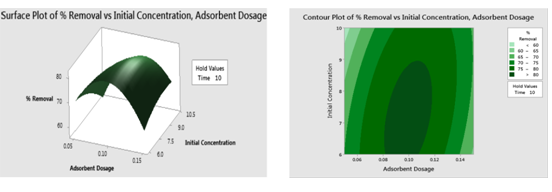
a. Developing mesoscale models of reinforced concrete
Faculty member: Mr.Shaji M. Jamal and Mr.Dhileep M
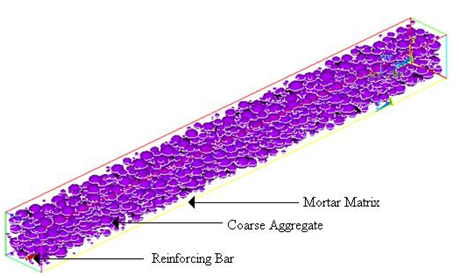
Concrete is a heterogeneous material consisting of coarse aggregate, mortar matrix and interfacial zones. Due tothe highly heterogeneous nature of concrete at smaller levels, modelling of response of concrete members under loadingis a difficult process. It is generallyaccepted that the overall behaviour of concrete can be predicted well by the meso level models. Studies exploring simple procedure for generating a random aggregate structure are done by some of theresearchers using the constitutive model at meso-level. The study reveals the potential of the mesoscopic numericalsimulation using a modified micro truss model to predict the nonlinear response of reinforced concrete structures. Themodified micro truss model correctly predicts the load-deflection behaviour, crack pattern and ultimate load of reinforcedconcrete beams failing under different failure modes. The recent studies present a simple two phasemodel without any micro truss, since the aggregates are distributed randomly. The newly proposed model predicts thecrack pattern; load deflection curve and failure load fairly well for flexure beams and shear beams subjected to three-point loading. Therefore in the proposed study, an attempt will be made to extend the newly developed simple twophase meso scale model to reinforced concrete compression members.
b. Size Effects in Reinforced Concrete Beams
Reinforced Concrete deep beams are very much used in high rise buildings, bridges and infrastructure like water tanks, retaining walls, etc. According to IS-456 (2000), a simply supported beam is classified as a deep beam when the ratio of its effective span L to overall depth D is less than two. Due to geometric proportions the behaviour of RC deep beams is mainly governed by shear strength. But several parameters affect the strength of deep beams which include effective span to depth ratio, concrete strength, size effect etc. In real world, because of size effect, larger beams will fail at a lower stress than a smaller beam made up of same material. Several studies are being conducted to study the size effect on the strength of deep beams. Therefore attempts are made to evaluate the size effect on the strength of reinforced concrete deep beams and propose a new and effective model to find the shear strength of the beam.
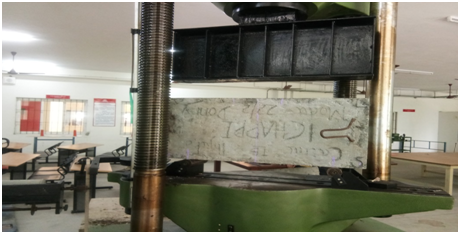
a. Steel Fibre reinforced rubcrete
Faculty member: Dr. Sandeep M.S
The ductility of conventional concrete is very less. If structural members can be produced using materials having better ductility they will have better seismic performance. Recent researches have revealed that waste tyre rubber as a partial replacement for aggregates has the potential to improve the ductility of ordinary concrete. The major drawback for using rubcrete (Concrete containing rubber) was the reduction in compressive and flexural strength resulting due to the presence of rubber particles. A new cementitious composite material made by combining fibres and pozzolanic materials like fly ash and metakaolin with rubcrete will help in reducing the undesirable properties of rubcrete to a reasonable level. When such new composite materials with better ductility and lesser density are used for the construction of structural members, the intensity of damage caused by an earthquake can be reasonably reduced.
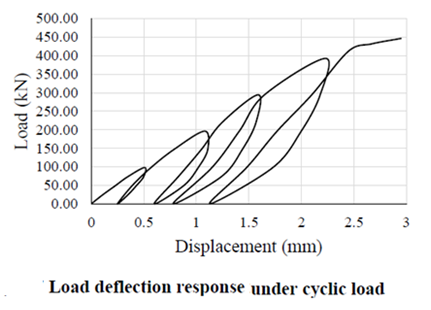
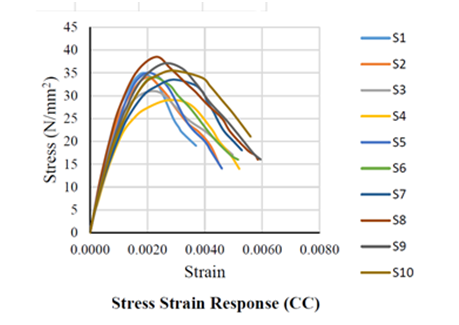
Moreover, one of the major components of such composite material is made from waste tyres. Its usage will side by side help in reducing one of the non-degradable waste materials which is generated in large quantity every year. Another noteworthy advantage of using these types of new composite material is the reduction in the amount of river sand for the production of concrete. Since rubber particles are used as a partial replacement for aggregates the total amount of river sand required for the construction will be reduced considerably and it also put a way for sustainable construction. Attempts are made to optimize the quantity of rubber without compromising the strength of concrete.

b.Energy Efficient Production of QG Waste Bricks
Faculty member: Ms. Mary Lissy

Clay brick manufacturing is a sector which involves a lot of firing processes requiring higher temperature. To maintain this temperature, large amount of fuel in the form of wood, coal, biomass etc. need to be burnt in the kiln causing serious issues of air pollution. Also, with the increase in the number of industries coming up, large amount of un-disposable waste gets accumulated. If suitable remedies are not adopted for its safe disposal, it may pollute the water bodies through runoff. This project is an effort to reduce the brick firing temperature in the kiln to about 6000C thereby reducing the cost of production and making the whole process environmental friendly. This work will put forward a suitable alternative for the safe disposal of industrial debris like quarry dust and glass powder by incorporating them as a partial substitute for river sand which is one of the costly constituent of clay brick and thereby further reducing the cost of production. Experimental results showed higher compressive strength of 21.31 N/mm2 when the brick was casted with mix proportion of Cement: Sand: Red earth: Glass Powder: Quarry Dust = 4:1:1:1.5:2.5. The strength measured at temperature 6000C met the requirements of the National Standards.
Proposed method for the manufacturing of energy efficient fired clay bricks using industrial derbies introduce an effective means for waste disposal. The clay brick samples fired in the muffle furnace at a reduced temperature of 6000C were tested for compressive strength after 3 days of firing which showed that the value ranges from 11N/mm2 to 21N/mm2. Experimental results inferred that glass powder and quarry dust in the ratio 1.5:2.5 gave higher compressive strength of 21.31 N/mm2 with a standard deviation of 1.28. The water absorption of the sample was also checked and the results showed less than 15% which corresponds to the water absorption of a first class brick.The compressive strength and water absorption results show that these samples belong to first class bricks category with a class designation of 20 as per IS 1077:1992. These bricks casted with reduced temperature incorporating industrial debris will put forward a new aspect to revolutionize the clay brick manufacturing sector in India and can be used for the construction of external walls and load bearing structures.
Faculty members: Mr. Shaji M. Jamal, Mr. Daniel A. V and Mr. Binol Varghese
Learning through Games is an ancient technique which was used for coaching soldiers for war in those times. But now a day, especially for the new generation kids, attention and making them engaged in the subject is a daunting task for the teachers or faculty. At the same time, mobile games seem to be making them addict irrespective of the theme or the story. Most of the kids like stories and simple game assisted learning make them more interested in the topic. It is seen from studies that, in addition to make them attentive, they will learn more facts and principles, they will retain the information learned, they will acquire more critical thinking and decision making skills, it helps to change their attitude significantly, etc., are some of the advantages of LTG over conventional mode of teaching and learning. Also this is can be a major change in the teaching/learning scenario prevailing for quite a long time.

a. seismic Analysis of Irregular Structures
Faculty member: Mr. Dhileep M

The rationale for using the code provisions for the number of modes to be used for dynamic analysis of irregular building structures using the response spectrum method is examined. The results of this study show that the fundamental mode approach for regular structures and ninety percent modal mass criterion for the number of modes to be considered for the dynamic analysis of irregular structures are not adequate. It is observed that the present criterion results in theunderestimation of shear forces in the top and bottom storey in the numericalexamples considered. An attempt is made to develop a simplified method for theelastic seismic analysis of irregular structures using the ability of the residual modeto approximate the damped periodic part of the response. The residual mode is suitably modified to take the contribution of truncated higher modes other than the first mode. The studies also show that for the pushover analysis of structures the90% modal mass criteria for the number of modes to be considered may not result in correct responses in all the structural members. The developed simplified“dynamic correction” method is extended to the nonlinear pushover analysis of structures. It is observed that in the numerical examples considered, a “dynamic correction” using the modified residual mode method is able to approximate themodal responses of the truncated higher modes other than the first mode.
b.Rigid Response Coefficient for Modal Response Combination of Non-Classically Damped Structures
Faculty members involved: Mr. Dhileep M and Mr. Binol Varghese
Using classical damping for non-classically damped systems like nuclear power plant piping systems supported by stiff structures, coupled building piping or equipment and soil structure interaction system of structures, may lead to inaccurate calculation of responses. In high frequency region of the spectrum modal responses are rigid and combine algebraically irrespective of whether the modes are near or far away. United States NuclearRegulatory Committee, USNRC 1.92, rev3 (2012) recommends the Gupta method for the modal combination of the responses which contains a rigid and damped periodic part. Theempirical expressions for rigid response coefficient are based on a straight-line fit between akey frequency and a rigid frequency which is independent of damping. The modal responsecombination of modal responses of non-classically damped structures involves modalcorrelation coefficients based on relative displacement-based spectrum and relative velocity-based spectrums. All the relevant parameters required for the modal response combination of non-classically damped systems whose response contains a rigid as well as periodic part are expressed in terms of empirical relations based on these earthquakes. The relative velocity-based parameters required for the modal response combination of non-classically damped structures are expressed in terms of relative displacement-basedparameters. Therefore, it is proposed to develop an expression for rigid response coefficients based on the numerical studies using real earthquake ground motions which can be used for different damping ratios for the modal response combination of non-classically damped structures. The corresponding key frequencies and rigid frequencies will be studied in detail.
a. Seismic Analysis of Bridges
Faculty member: Dr. Babu Kurian and Mr. Dhileep M
Analysis of structures under seismic loads and models for accurately predicting thestructural response has become an inevitable research area due to the increased frequency ofground disturbances all over the world. The accurate calculation of the response is verymuch important for structures like bridges, especially with long spans.Seismic building codes specify that the responses can be considered accurate if about 90%of the total structural mass participates in the number of modes considered. The studies conducted on nonlinear analysis of multi-framebridges show that the present codal criteria of 90% structural mass for the number of modesto be considered for the dynamic analysis of bridges is not adequate, especially in longbridges or bridges with high strength. It is also observed that this criterion is not sufficientfor estimating shear key forces, which plays a critical part during an earthquake.A great deal of work is done regarding the contribution of “missing mass” in nuclear pipingand buildings, but the studies in bridges are limited. Further the ability of the present codal provisions for the seismic analysis of stiff members like seismic arrester heavy pier caps…etc has to be investigated. Therefore it is proposed to develop a method to take the effect of “missing mass” due to the truncated modes in long span multi-frame bridges and a methodology to calculate the seismic forces in all parts of the bridge structure including the shear keys, seismic arrestor…etc.
b. A study on the cracks formed in the deck slab of Neelimangalam bridge
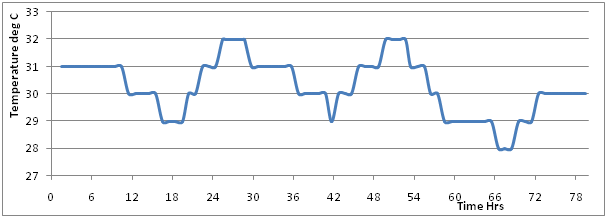
Cracks are observed on the deck slab of the Neelimangalam bridge(Location at Ch: 39+709 on Chengannur to Ettumanoor Ch:0+000 to Ch:47+700 of SH-1) after the casting of the slab. Various tests including load test were carried out to study the causes for the formation of cracks. The undersigned conducted a site visit and examined the structure thoroughly. After studying the available expert opinion and analysing the test results of various agencies, it is concluded that the cracks are formed due to drying shrinkage and are non-structural. The cracks formed are thin and shallow and are sealed off.The rebound hammer test and the core tests reveal that the super structure is having adequate compressive strength. This criterion given by IRC SP51:2015, is satisfied during the load tests. The measured deflections from the tests are analysed and it is found that the measured deflection at critical location after applying temperature correction is 3.797mm, which is less than the theoretical deflection (3.952mm) calculated for the bridge under consideration. As per IRC SP51:2015, the measured deflection and strains at critical location of particular structural member shall be equal to or less than the theoretical deflection and strains obtained from the respective designs. This criterion is satisfied for the present case.As per IRC 112 2011, , the limiting values of deflection under live loads for vehicular and pedestrian bridge is Span/1000, ie 15.4mm as calculated for the bridge which is greater than the theoretical and experimentally calculated values of deflection. Considering the above facts, it is recommended to open the bridge for public transport. The bridge is opened, withstand successfully the 2018 floods and used today for daily transport in SH1 without any problems. Further it is observed that the present criterion for temperature correction is not adequate for load tests. Further studies are conducted to develop an alternative criterion for temperature correction.
Faculty members: Ms. Serin Sara Roy and Ms. Remadevi M
This study aims to develop a Geographical Information System (GIS) based tool, as a web application. This will serve the purpose of delivering geographical features and details on the identified black spot, with provisions of updating the locations. This application can be used by governing and administrating authorities to reconsider the remedial actions and developments carried out in a particular location, and to alleviate their road safety interventions effectively.

Kochi and Trivandrum are two cities in Kerala, where the carriageway related development is more prominent. The identification of black spots and the related study in these areas can be effectively revamped and restructured and can be applied to other urban areas also. In this research, a new algorithm/process will be formulated to identify the black spots in urban areas, and effectively present it with more details. This project is to develop a GIS tool. Web application which can be patented and can be provided to transportation administration authorities to improve the locations identified with minimal cost.
Black spots are identified as locations in a roadway where maximum accident density occurs. The lack of area in the state of Kerala, for further developments of road is having an adverse effect on the road safety interventions. The developments carried out in major cities, within these limitations, cause a shift in the black spots, identified prior to developments. In this project, a detailed analysis on the shift in paradigms and practices on carriageway related developments are being studied and how it changes the black spot locations is going to be analysed. Many number of factors like, speed, alignment, curvature, lighting, surface roughness etc., are there, which can be used as pre-deterministic factors for identifying black spot along with accident data. Roads in two major cities in Kerala viz Kochi and Trivandrum are studied and the best available numerical method based on literature survey for identifying accident prone zones will be used, to analyse the black spot in these area. Based on different algorithms and Artificial Neural Network studies, the identified black spots can be correlated with other cities also.

Self Healing Concrete
Faculty member: Ms. Jereena Jawahar
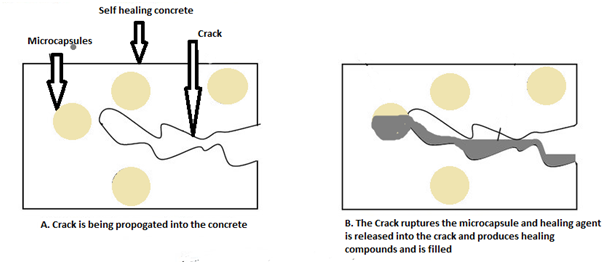
Concrete is the most widely used construction material because of its high compressive strength, relatively low cost, etc. One adverse property of concrete is its sensitivity to crack formation as a consequence of its limited tensile strength. Although the steel reinforcement restricts the crack width, they are mostly not designed to completely prevent crack formation. Cracks can form at any stage of life of a concrete structure and most begin internally where they cannot be seen for years until major repairs are needed. Consequently, maintenance to concrete structures is frequent and costly.
Numerous methods and processes are available for self-healing cracks within damaged concrete. Natural healing occurs when a concrete crack is automatically and naturally blocked without use of a chemical matrix or design. The autonomic healing process is a method that utilizes a ‘specialized design matrix’ of specific man made materials to aid in the healing process. These materials assist in sealing the crack within in an expedited manner. The activated process utilizes a different mechanism, which is previously implemented and placed in the concrete beforehand. Although these methods are reliable and consistent, crack propagation plays a large role on its healing effectiveness.The self-healing microcapsule has self-healing chemicals which has the ability to independently resolve issues such as internal cracking and micro-cracking. When the cracks occur, they initiate imminent path towards structural failure. By filling these voids and cracks with self-healing materials, these structures will have a longer life cycle along with a less likelihood of destruction from unwanted moisture and corrosion wear.
Practical requirements of self-healing concrete material are low cost, passive smart and uniform distribution. A development of a smart concrete material should be directed towards engineering feasibility, high-performance and small-volume applications for engineering practice. Therefore, an effort in this work is to initiate an engineering approach for self-healing cement composite with microcapsules. This study is aimed to develop a new potential healing agent which can effectively heal cracks developed in cementitious materials to ensure safety and prolong lifespan of the structure.
a. Automated Infiltrometer
Faculty Member: Mr. Sunith John David
Infiltration is the process by which water on the ground surface enters the soil. The rate of infiltration is affected by soil characteristics including ease of entry, storage capacity, and transmission rate through the soil. The double ring infiltrometer is a widely used method of infiltration test used in many applications such as the design of land drainage pipes, design of sports surfaces, golf courses, isolation layers of the communal wastes, etc. The measurement of infiltration, especially in hilly areas, was very difficult since the depth of water was measured manually at different intervals of time. The infiltration capacity curve was also plotted manually during early times. In short, the system is highly un-automated and it is highly dependent to the user constant involvement for accurate reading. Therefore a double ring infiltrometer equipped with arduino is developed. The infiltration capacity curve is plotedusing the arduino board.
b. Studies on Infiltration Models for Different Soils And Groundwater Seepage
Infiltration is treated as one of the important parameter of the hydrological cycle as far as groundwater recharge is concerned. It depends on soil characteristics such as soil texture, hydraulic conductivity, soil structure, vegetation cover, porosity, permeability, degree of saturation etc. Infiltration models are the empirical formulae developed using infiltration concepts which is used to determine the infiltration rate of soil. The research work aims to analyze the different infiltration model analysis using statistical parameters and its impact on groundwater seepage.
Faculty members: Dr.Babu Kurian and Mr. Dhileep M

From ancient times, the traditional architectural practice ‘Vastusastra’ is rigidly followed and practised in many parts of the Indian sub-continent and has a unique position in Indian architecture. In Indian traditional domestic architecture, a hand calculator table and an index number system are used for finding the proportion and orientation of the building. The mathematical and logical background of this traditional practice, which is not known at present, is investigated. The study reveals that there is a strong and complex mathematical background behind this traditional architectural practice.
Faculty members: Dr.Babu Kurian, Mr. Dhileep M and Dr Sandeep M.S

Most of the regions in the state of Kerala are seriously affected by flood that occurred during the month of August 2018. A number of houses in the flood-affected areas are found significantly damaged or destroyed beyond repair. The flood affected the livelihoods of lot of people, especially those belongs to the low income group. A lot of government and non-government agencies offered lot of schemes for the reconstruction of houses for the flood affected people. A framed structure is generally considered to be more effective when compared to a load bearing structure, for the reconstruction of houses in the flood affected area. The framed structure got the advantage of structural integrity when compared to the load bearing structure. The mitigation studies shows that in many of the framed structures the frame remains intact during floods, while the remaining parts got severely damaged or washed away. The failure of load bearing structures is mainly due to settlement. Under these circumstances the authors submitted an initial proposal to develop a suitable structure and to undertake the planning, design and execution of the developed low-cost houses for the benefit of the people who were homeless due to flood to the MuthootM.George Foundation. An amount of Five Lakh rupees is sanctioned for the development and construction of one house having an area of 500 sqft with a maximum project duration 90 days under MuthootAashiyana Scheme of the MuthootM.George Foundation. Till date a total of 13 houses are constructed with a budget of 65 lakhs for the flood affected people.
Faculty member: Ms. Nishida A
Organic agricultural products are getting popular now days. The project aims to develop an app which can give all the details regarding an organic product which is supplied to the market. Various organic farms are visited and details are collected. An IOT based farm model is made with the aim of getting details of organic products from different farms. Sensors are placed and the results are discussed in a whatsapp group. This data is used for machine learning. The aim of this project is to increase the yield and to identify diseases with the help of IOT, Block chain and Machine learning. The work is done in collaboration with other departments in MITS and CTS.
Faculty members: Mr. Dhileep M and Mr. Sunith David John
The aim of this project is to develop systems which can be managed by a single person with the help of IT enabled tools and automation. Presently an E-Outlet is designed for banking purpose which can be managed by a single person with the help of IT enabled tools. The theoretical model which includes adequate security measures is developed and in the next stage a prototype will be made in the MITS campus for testing and trials. The concept will be used in future to facilitate automation in construction industry and other sectors.

Research Proposal on topic “Slope Stability Analysis of Lateritic Deposits under Different Rainfall Intensities”, for grant under Engineering and Technology Programmes (ETP) by Kerala State Council for Science, Technology and Environment is submitted. The study was based on the failure of the vertical cut occurred at the MITS campus premises. Cause of the failure may be prima facie attributed to the infiltration of water due to sustained heavy rain. From the study of the relation between rainfall intensity and saturation of lateritic soil, the strength and stability of the vertical cut can be predicted. It is decided to make a small-scale physical slope model called the Soil–Water Interaction Modelling System (SWIMS) in the laboratory to investigate the interrelations between slope stability and rainfall infiltration under laboratory conditions. The information from the laboratory study will be utilized for numerical modelling and different parametric studies that can be conducted by using SLOPE/W and proposed SEEP/W software. Stability analysis and the effect of rainfall pattern on unsaturated slopes and vertical cuts are very important and related research work is very rare. Lateritic deposits are complex in behaviour and are less investigated. Therefore a probabilistic assessment of unsaturated lateritic soil stability under different rainfall intensities and duration will be explored in the study.
| Project Title | Duration | Funding Agency | Guided By | Application Status | Amount (Rs) | Academic Year |
|---|---|---|---|---|---|---|
| Traffic Surveys for the Preparation of DPR for Integrated Development of Coastal Highway with cycle track in Thiruvananthapuram, Kollam and Alappuzha Districts | 2 Months | NATPAC, Govt of Kerala | Remadevi M, Serin Sara Roy | Completed | 67000 | 2021 – 2022 |
| Pollution Abatement of Chithrapuzha River from Karingachira to Irumbanam | 4 Months | WRD, Govt of Kerala | Sunith John David | Completed | 25000 | 2021 – 2022 |
| OSM Mapping | 6 Months | IT Mission, Govt of Kerala | Binol Varghese | Completed | 47000 | 2021 – 2022 |
| Automated Infiltrometer | 6 Months | CERD | Sunith John David | Completed | 28000 | 2020 – 2021 |
| Innovative Flood Resistant Residence | 6 Months | KSCSTE | Minnie Mariya James | Approved | 10000 | 2019 – 2020 |
| Automated Infiltrometer | 6 Months | KSCSTE | Sunith John David | Completed | 9500 | 2019 – 2020 |
| Project Title | Funding Agency | Application Status |
|---|---|---|
| Geo-location and digital mapping of accident blackspots on major roads in cities of Kochi and Thiruvanthapuram – Development of a GIS based tool | KSCSTE | Applied |
| Response Coefficient for Modal Response Combination of Non-Classically Damped Structures | AERB, MUMBAI | Rejected |
| Missing Mass Effect in Bridges | KSCSTE | Applied |
| Remediation of contaminated soil | KSCSTE | Applied |
| Missing mass effect in bridges | KSCSTE | Under Review |
| Automated Raingauge | DST, Govt of India | Under Review |
| Slope stability analysis of lateritic deposits under different rainfall intensities | MoES, Govt of India | Under Review |
| PAION membrance for rapid desalination | DST, Govt of India | Under Review |
| Sl. No. | Journal Publication Details |
|---|---|
| * | Shaji M Jamal, Neelakantan T.R, PL MeyyappanSCIE Journal publication, “MesoGen—Development of an Android application for the Mesoscopic modeling of concrete”, SoftwareX 21 (2023) 101283, https://doi.org/10.1016/j.softx.2022.101283 |
| * | Shaji M Jamal, Neelakantan T.R, PL MeyyappanSCOPUS Journal Paper – “Study of mesoscopic modelling of concrete”, AIP Conference Proceedings, https://doi.org/10.1063/5.0108231 |
| * | Shaji M Jamal, C. Ramesh Kanna, S Manivannan, A Daniel Das, G VivekSCOPUS Journal Paper – “Wear analysis of cryogenic treatment cutting tool insert in turning of glass fiber reinforced plastics”, AIP Conference Proceedings, https://doi.org/10.1063/5.0108237 |
| * | Shaji M Jamal, C. Ramesh Kanna, S Manivannan, A Daniel Das, G VivekSCOPUS Journal Paper – “Influence of tool geometry on tool wear in turning of EN24 steel by using GRA and RSM”, AIP Conference Proceedings, https://doi.org/10.1063/5.0108238 |
| * | Shaji M Jamal, C. Ramesh Kanna, S Manivannan, A Daniel Das, G VivekSCOPUS Journal Paper – “Performance analysis of vortex tube refrigeration system by experimental method”, AIP Conference Proceedings, https://doi.org/10.1063/5.0108234 |
| Sl. No. | Journal Publication Details |
|---|---|
| * | Rema Devi M, A Nikhitha Radhakrishnan, Anuja Ajith, Smrithi K V, Athul A S, “Effect of construction variablity on performance of flexible pavement”, published in 8th International Conference on Transportation Systems Engineering and Management(CTSEM), August 2021 |
| * | Sunith John David, K U Abdu Rahiman, V Subha, “A novel statistical approach for infiltration model analysis”, LNCE Volume 176 |
| * | A V Daniel, T I George, S M Dasaka, “Soil arching and its effect on contiguous pile wall subjected to staged excavation: physical and numerical investigations”, published by Indian Geotechnical Society, 11 February 2022 |
| * | Babu Kurien, M Dhileep, K M Ramya, “Aspects of proportions in Indian traditional domestic architecture”, published by Interdisciplinary Science Reviews, Volume 47, 2022 |
| * | Babu Kurien, M Dhileep, K M Ramya, “Aspects of proportions in Indian traditional domestic architecture”, published by Interdisciplinary Science Reviews, Volume 47, 2022 |
| Sl. No. | Journal Publication Details |
|---|---|
| * | Sunith John David, Devika V S, Roshini S Nair, Anjana Viswanath, Deno Prince, “Application of similarity analysis for rainfall runoff modelling”,published in International Conference on Recent Advances in Civil Engineering (ICRACE) July 15-17, 2020 |
| * | P N Mary Lissy, G Madhu, Roy M Thomas, “Modelling of packed bed column studies for the removal of Cu(II) using polypyrrole alumina iron oxide nanocomposite”, published by Desalination Publications, July 2021 |
| * | A V Daniel, Basil Baby, Emmanuel Jose, P P Gokul, Naveen John, Sachu Saju,”Experimental investigation on PCE and SNF type admixture on early age strength of M40 grade green concrete”, published in Springer Nature Switzerland AG, 2020 |
| * | Jereena Jawahar, Subha Vishnudas, “Encapsulation of mineral compounds as crack healing materials for cement based composites – An overview”, published in International Conference on Recent Advances in Civil Engineering (ICRACE), July 15 – 17, 2020 |
| * | Serin Sara Roy, Basil Baby, Emmanuel Jose, “ Characteristics of green concrete with perlite as a partial replacement of fine aggregate” |
| * | Sunith John David, Samal Ummer, Jeeva Maryam Oommen, Reshma Raj R, Ansa Muhammed, “Automated infiltrometer”, published in International Conference on Systems, Energy and Environment (ICSEE), 2021 |
| * | Anu James, Babu Kurien, “Parametric response estimation study in cantilevered and strutted diaphragm”, Conference paper, LNCE Volume 83, September 2020 |
| * | A Nishida, Aparna Gopinath, S Chandraj, K Radhika, R Sethu, “Environmental remediation of oil contaminated soil”, published in Springer Nature Singapore Pte Ltd.,2021 |
| Sl. No. | Journal Publication Details |
|---|---|
| * | Mary Lissy P N, Dr.G Madhu, Dr.Roy M Thomas,”Adsorption behaviour of Chromium ions on Polymer coated Alumina-Iron oxide Nanocomposite”published in Research Journal of Chemistry and Environment, Vol.24(1), pages 64-72, January 2020. (SCOPUS Indexed). |
| * | Mary Lissy P N, Dr.G Madhu, Dr.Roy M Thomas,“Polypyrrole/ Alumina Iron Oxide Nanocomposite for removal of Copper Ions from aqueous solutions” published in Materials Science Forum, Volume 969, page 367-372, August 2019 by Trans Tech publications. (SCOPUS Indexed) |
| * | Mary Lissy P N, Dr.G Madhu, Dr.Roy M Thomas“Adsorption of copper ions from waste water using PPy/Al2O3-Fe2O3 nanocomposite” accepted for the publication in IOP science journal, Earth & Environmental Science. (SCOPUS Indexed) |
| * | Dhileep M, Tintu Shine A L, FincyBabu, “Mesoscopic analysis of reinforced concrete beams”, Coupled System Mechanics, 8(4), 289-298 DOI: https://doi.org/10.12989/csm.2019.8.4.289 (ESCI,SCOPUS Indexed), 2019 |
| * | Dhileep M, Sunith John David,Anitta Maria Siby, Ayana R Nair, Diya Denny, Paul Antony, “Problems in a Water Distribution Network – A Case Study”, AICERA 2019, Amal Jyothi College of Engineering, Kanjirapally. (To be published as a book chapter by Taylor and Francis ) |
| * | Dhileep M, Arumairaj P D, Hemalatha G, Sandeep M S, “Effect of rigidity on seismic analysis of structures”, Accepted for publication, ARICE2019 as Book Chapter in Lecture Notes in Civil Engineering. |
| * | Sunith John David, Ahiya Elizabeth Joy, Arya Shaji, Ashish K V, Muhammed Aslam P S, “A Comparative Study on Scour Depth Analysis around Bridge Piers on Different Soils”, Proceedings of the Annual International Conference on Emerging Research Areas AICERA 2019, Amal Jyothi Engineering College, Kottayam, July 2019. |
| * | Dhileep M, Sunith John David,Anitta Maria Siby, Ayana R Nair, Diya Denny, Paul Antony, “Problems in a water distribution network-A Case Study”, Proceedings of the Annual International Conference on Emerging Research Areas, AICERA 2019, Amal Jyothi Engineering College, Kottayam, July 2019. |
| * | Sandeep M S, Praveen Nagarajan, A P Shashikala, “Development of Models for Predicting Strut Efficiency Factors for Conventional and Steel Fibre Reinforced Concrete Deep Beams”, Material Science Forum, Vol. 969, 2019, pp 187-192. |
| * | Sandeep M S, Praveen Nagarajan, A P Shashikala, “Development of Stress Block Parameters for Steel Fibre Reinforced Rubcrete”, 2nd International Conference on Innovative & Advanced Multidisciplinary Research, 12-13 October 2019, Park Avenue Convention Centre, Singapore. |
| * | Sandeep M S, Praveen Nagarajan, A P Shashikala, “Feasibility of ACI 318-14 Strut-and-Tie Provisions for The Analysis and Design of Rubcrete and Steel Fibre Reinforced Rubcrete Deep Beams”, Structural Integrity Assessment, Springer, Singapore, 2020. pp 431-442. |
| * | Sandeep M S, Dhileep M, Arumairaj P D, Hemalatha G,”Effect of rigidity on seismic analysis of structures”, Accepted for publication, ARICE2019 as Book Chapter in Lecture Notes in Civil Engineering. |
| * | Shaji M Jamal, Femi K M, T R Neelakantan, “A compact equipment for removing dissolved iron from drinking water”, published by Blue Eyes Intelligence Engineering and Sciences Publications, Volume-9 Isuue-2S2, December 2019 |
| * | Shaji M Jamal, T R Neelakantan, Ramesh Babu, Chokkalingam, “Regression analysis by Taguchi method on strength of weathered crystalline rock sand concrete”, published by Blue Eyes Intelligence Engineering and Sciences Publications, Volume-9 Isuue-1S4, December 2019 |
| * | Anu James, Babu Kurian, “Design specifications for diaphragm wall : State of the Art, published in Springer, February 2020 |
| * | Anu James, Babu Kurian, “The effects of anchor configurations and field characteristics on anchored diaphram walls”, published in Journal of Science, 2020 |
| Sl. No. | Journal Publication Details |
|---|---|
| * | Anu James and BabuKurian, 31ST KERALA SCIENCE CONGRESS – ABSTRACTS, Kerala State Council for Science, Technology and Environment, SasthraBhavan, Pattom, Thiruvananthapuram – 695004, ISBN NO : 81 – 86366 – 97 – 0, Page 96, February 2019. |
| * | Anu James and BabuKurian, ‘Parametric response estimation study on cantilevered and strutted diaphragm walls’, International Conference on Advanced Research and Innovations in Civil Engineering, ARICE 19, June 2019. |
| * | Mary Lissy P N, Dr. G Madhu, Dr. Roy M Thomas,“Polypyrrole Alumina/Iron Oxide nanocomposites for the removal of Copper ions from aqueous solutions”, “Material Science Forum”, Vol 969, Page 367-372 by Trans Tech Publications Ltd. , doi: 4028/www.scientific.net/MSF.969.367Accepted: 2019-02-23. |
| * | Anu James and BabuKurian, ‘Comparison of analysis specifications and practices for diaphragm wall retaining system’, StudiaGeotechnica et Mechanica, 2018, 40(1), 21-29. |
| * | Mini M.P, BabuKurian and Anu James, ‘A theoretical study on the analysis of diaphragm wall’, International research journal of engineering and technology, 05(05), 2018, 4089-4092. |
| * | Mary Lissy P. N., Carolin Peter, Kavya Mohan, Sneha George and Shone Greens, “Energy Efficient Production of Clay bricks using Industrial debris”, Elsevier, Heliyon Journal, 8th November 2018, DOI:10.1016/j.heliyon.2018.e00891. |
| * | Sandeep M S – “Behaviour of Steel Fibre Reinforced Rubberized Continuous Deep Beam”, Material Science and Engineering, IOP Science Publication, Vol. 330, No. 1, 2018. |
| * | Sunith John David, “Statistical Application on Infiltration Model Studies”, International Journal of Current Engineering and Scientific Research, Volume.5, Issue.3, Part 6 pp. 39-42, 2018. |
| * | Serin Sara Roy, Black spot identification using severity index method”, International Journal of Current Engineering &Scientific research Vol V Issue 3,2018. |
| * | Ginu S Malakeel, Assessment of drought vulnerability of Ernamkulam district using SPI Index, International Journal of Creative Research Thoughts – IJCRT (ISSN: 2320-2882) Volume 6 Issue 2 April 2018. |
| * | Dhileep M, Arumairaj P.D.,Hemalatha G and Sandeep M.S, “Effect of Rigidity on Seismic Analysis of Structures, ARICE-2019, June 2019, Muthoot Institute of Technology & Science, Ernakulam, Kerala. |
| * | Mary Lissy P N, A research paper titled “ Polypyrrole/Alumina Iron Oxide Nanocomposite for removal of Copper ions from aqueous solutions” presented in an International Conference at Hyderabad on 19-20thNovember 2018 organised by Marri Laxman Reddy Institute of technology, Telengana. |
| Sl. No. | Journal Publication Details |
|---|---|
| * | Sunith John David,“A Novel Methodology for Infiltration Model Studies”, International Journal of Engineering Technologies and Management Research, Vol.5, Issue 3, March, 2018, pp. 190-199. |
| * | Sunith John David, “Mathematical modelling of flow through porous media and determination of velocity potential”, International Journal current engineering and scientific research, Volume 4, Issue 2, in the year 2017, ISSN: 2393-8374, pp: 040-045 |
| * | Sunith John David, “Determination of potential within a flow field using finite element method”, International Journal of Advanced Research and Management in Engineering Technology, Volume 2, Issue 1, January 2017, ISSN: 2456-2998, pp: 334-34 |
| * | Rija Johny, “Experimental Study on Bentonite-Quarry Dust Mixture to Use as a Landfill Liner”, International Journal of Science, Engineering and Technology Research , Volume: 6, Issue: 5, May-2017, pp 802 – 805. |
| * | Eliyas Babu, Merin Abraham, Nikitha Boban, Shifana M. S., Basil Mathai, “Footings on Geosynthetic Reinforced Granular Pads overlaying Weak Local Soil”, IJCRT, March 2018. |
| * | Mary Lissy P N, Carolin Peter, Kavya M Mohan, Sneha George, Shone Greens” Production of Innovative energy efficient bricks using industrial debris” presented in the National conference on Emerging Technologies NACET 2K18 held on 17thMarch 2018 organised by MES college of engineering. |
| * | Sunith John David,“Decision Factor Analysis on Infiltration Model Studies”- Conference Proceedings of Advances in Civil Engineering, ACE 2018 and annual conference series Engineering Education for Facing the Future (E2F2′18)- SreeBubha College of Engineering, April 2018. |
| * | Sunith John David, “Flownet analysis using finite element method”, Proceedings, National Conference on Recent Trends in Engineering and Technology- NCRTET2017, Carmel Engineering College, Pathanamthitta, April2017 |
| * | Sunith John David, “Seepage analysis of Karapuzha Dam by Finite Element Method”, Proceedings, Third National Dam safety conference, IIT Roorkee, May, 2017 |
| * | Bub-GyuJeon, Dhileep M., Nam-Sik Kim, and Dae-GiHahm, “Seismic Analysis of the Main Steam Pipelines in Seismically Isolated Nuclear Power Plants”, Transactions of the Korean Nuclear Society Spring Meeting, May 17-18, 2012, Jeju, Korea, 964-965. |
| Publication Details |
|---|
| Nishida A., Gopinath A., Chandraj S., Radhika K. and Sethu R,’Environmental Remediation of Oil Contaminated Soil’,Book chapter, Current Trends in Civil Engineering, Lecture Notes in Civil Engineering, Springer, Singapore, vol 104, pp 21-34, DOI: https:–doi.org-10.1007-978-981-15-8151-9_3 . |
| Alfiya Parveen, Nishida A, Sobha Cyrus,’Remediation of Heavy Metal Contaminated Soil Using Nanomaterials’,2021 National Conference on Sustainable Practices in Civil Engineering. |
| S Sruthy, Nishida A, Sobha Cyrus,’A Review on Immobilization of Heavy Metals from Contaminated Soil’,2021 National Conference on Sustainable Practices in Civil Engineering. |
| Mary Lissy P N, Amrutha A, Minu Alex, Swathi Babu and Swathi Sajeev,’Replacement of Fine aggregate with shredded PET and PVC wastes in concrete paver blocks’,IEEE Xplore Conference CTFC 2021 (Conference on Technologies for future cities 2021. |
| Ciya Maria Roy, Elsa Manoj, Harsha Joy, Sarin Ravi,’Development of flood hazard vulnerability map for Alappuzha District’,International Journal of Current Engineering & Scientific Research, Vol V., Issue 3, (2018). |
| Eliyas Babu, Merin Abraham, NikithaBoban, Shifana M. S,’Footings on Geosynthetic Reinforced Granular Pads Overlaying Weak Local Soil’,International Journal of Creative Research Thoughts, Vol VI, Issue 1, (2018).. |
| Anu C Paul, Helen Peter, Elizabeth Paulose, Merina Saju,’Assessment of Drought Vulnerability of Ernakulam District using SPI Index’,International Journal of Creative Research Thoughts, Volume 6, Issue 2, April 2018.. |
| Adarsh V A, Aswathy Santhosh, Athira Jayakumar, Binita George,,’Traffic Signal Designing for Karingachira Junction’,International Journal of Creative Research Thoughts, Volume 6, Issue 1, March 2018. |
| Mohammed Fayaz., MridulaS., Sarahjaison., Sherin P Yoyak,’Black spot Identification using Severity Index Method’,International Journal of Current Engineering & Scientific Research, Vol V., Issue 3, (2018). |
| Akash Shaji, Ashmy M S, Neenu Raju and Nimisha Sebastian,’A Novel Methodology for Infiltration Model Studies’,International Journal of Engineering Technologies and Management Research, Vol.5, Issue 3, March, 2018, pp. 190-199. |
| Akash Shaji, Ashmy M S, Neenu Raju and Nimisha Sebastian,’Statistical Application on Infiltration Model Studies’,International Journal of Current Engineering and Scientific Research, Volume.5, Issue.3, Part 6 pp. 39-42, 2018.. |
| Kavya Mohan., Shone Greens., Sneha George., Carolin Peter, Mary Lissy P. N.,’Production of Innovative Energy Efficient bricks using Industrial Debris’,Proceedings, National Conference on Emerging Technologies., March 2018., MES College of Engineering Kunnukara.. |
| Athulya Sreesa E K., Ann M Biju., Devika Ramesh., Rinsa K,’Numerical Study on the Effect of Near – Field Blast Explosion on RCC Columns’,International Conference on Materials, Mechanics and Management, July 2017.. |
| Dakheel Abdulla., Jacob V James., Jesna Francis., Kavya Jose.,’Determination of Potential within a flow field using finite Element Method’,International Journal of Advanced Research in Management, Engineering & Technology, Vol 2, issue 1, January 2017.. |
| Anandu S Babu., Arun G Pai., Cerin Mathew., Julie Jose,’Role of Iron Concentration on Hydrogen Production from waste water-A study in Dairy Waste’,International Journal of Engineering Research & Technology, Vol 6, Issue 3, March 2017.. |
| AthulyaSreesa E K., Ann M Biju., Devika Ramesh., Rinsa K,’Effect of Blast Loading on Columns- A Critical Review’,International Journal of Science, Technology & Engineering.. |
| Jisna George., Jubeena TA., Siya M Basheer., Aravind M,’Experimental Investigation on Strength Improvement of Rubcrete’,International Journal of Innovative Research in Science, Engineering & Technology, Vol 6, Issue 4, April 2017.. |
| AthiraUnni., ManjulaUnni., Mithrathmajan A K., Sruthy Rajkumar., V Meril.,,’Efficiency of Geosynthetics in subgrade Soil Stabilization- A comparative study in Laterite Soil”‘,International Journal of Innovative Research in Science, Engineering & Technology, Vol 6, Issue 4, April 2017. |
| Shincy V Varghese., Ajna Basheer., AthiraAppu., Muhammed KA,’Development of Unit Hydrograph for Thodupuzha River Basin using ArcGIS”,’,International Journal of Innovative Research in Science, Engineering & Technology, Vol 6, Issue 4, April 2017. |
| Rahasina M A., Sajeev Philip., Greeshma Ravi., Reshma Raveendran,’Performance Evaluation and Safety Analysis of Pedestrians at VytillaJunction, Kochi’,International Journal of Innovative Research in Science, Engineering & Technology, Vol 6, Issue 4, April 2017.. |
| Basil Paul., Drisya E., Agnus Baby., Aswathy M,’Effect of Thickness of FRP layer on debonding in CFRP Strengthened Beams”‘,International Journal of Innovative Research in Science, Engineering & Technology, Vol 6, Issue 4, April 2017.. |
| BeenuCheriyan., D Praveen Das., LiyaJohn., M Devadathan,’A study on Impact of Urbanization on Surface Runoff in Muvattupuzha Muncipality’,International Journal of Innovative Research in Science, Engineering & Technology, Vol 6, Issue 4, April 2017.. |
| Anandu S Babu., Arun G Pai., Cerin Mathew., Julie Jose,’Role of Iron Concentration on Hydrogen Production from Rice mill Effluent’,International Journal of Innovative Research in Science, Engineering & Technology, Vol 6, Issue 4, April 2017.. |
| Nimisha Baby., Jasiyamol T A., Abhisha Elizabeth Aji., Aparna Suku,’Partial Replacement of Fine Aggregates in SDBC Mix with China Clay Waste’,International Journal of Innovative Research in Science, Engineering & Technology, Vol 6, Issue 6, June 2017. |
| Sl. No. | Product Name | Description of Product | Developed by | Remarks & Utility |
|---|---|---|---|---|
| 1 | MCM-Mini Compression Machine | A mini compression testing machine used for testing the compressive strength of gas springs | Mr. Dhileep M & Dr. Sandeep M S | Developed as a part of department consultancy work 2019-2020 AY |
| 2 | Automated Infiltrometer | An IoT based soil infiltration measuring device | Mr. Sunith John David | Developed along with students as a part of design project of 2017 Admn students 2019-2020 AY |
| 3 | Strut Testing Machine | Device used for demonstrating Euler’s Buckling load calculation | Dr. Sandeep M S | Developed as an add on equipment for Material Testing Lab 2019-2020 AY |
| 4 | Plate Load Testing Apparatus | A miniature plate load testing laboratory setup | Mr. Basil Mathai | Developed for student project activities and add on experimental set up for Geotechnical Engineering Laboratory 2018-2019 AY |
| 4 | Plate Load Testing Apparatus | A miniature plate load testing laboratory setup | Mr. Basil Mathai | Developed for student project activities and add on experimental set up for Geotechnical Engineering Laboratory 2018-2019 AY |
| 5 | Indirect Tensile Strength Testing Apparatus | Add on apparatus intergrated with Marshal Stability Testing Machine to determine indirect tensile strength of bituminous specimen | Ms. Remadevi M | Developed as part of final year student project during 2018-2019 AY |
| 6 | MITS Contacts | Mobile App for easy access of inhouse faculty, students and parents contact details | Mr. Shaji M Jamal | Developed for the easy access of inhouse communication detais 2019-2020 AY |
| Sl. No | Name | Year of Registration | University |
|---|---|---|---|
| 1 | Mr. Sunith John David | 2017 | Cochin University of Science and technology |
| 2 | Mrs. Nishida A | 2016 | Cochin University of Science and technology |
| 3 | Mr. Shaji M Jamal | 2017 | Kalasalingam Academy of Research and Education, Krishnankoil, Tamil Nadu |
| 4 | Mrs. Jereena Jawahar | 2017 | Cochin University of Science and technology |
| 5 | Mr. Daniel A. V. | 2021 | APJ Abdul Kalam Technological University |
| 6 | Mr. Binol Varghese | 2021 | APJ Abdul Kalam Technological University |
| Sl. No. | Project Domain | Project Title | |
|---|---|---|---|
| 1 | Structural Engineering | Application of Tuned Mass Dampers for Structural Vibration Control | |
| 2 | Structural Engineering | Seismic Performance Evaluation of Buildings with Central Openings using Non-Linear Pushover Analysis | |
| 3 | Transportation Engineering | Congestion Analysis and Evaluation by Traffic Simulation using Aimsun Next Software | |
| 4 | Geotechnical Engineering | Remediation of Heavy Metal Contaminated Soil in Eloor-Edayaar Region by Rhamnolipid Biosurfactant | |
| 5 | Structural Engineering | Structural Behaviour of Tensairity Arch | |
| 6 | Transportation Engineering | Traffic Management Plan for Perumbavoor Central Business Region | |
| 7 | Structural Engineering | Effect of Ceramic Tile Waste Powder on the Properties of Cement Concrete | |
| 8 | Structural Engineering | Numerical Investigations on CFRP Base Isolator | |
| 9 | Structural Engineering | Analysis of RC Members Jacketted with Textile Reinforced Mortar Composites | |
| 10 | Structural Engineering | Durability Property of High Strength Concrete with Weathered Crystalline Rock as Fine Aggregate | |
| 11 | Geotechnical Engineering | Synthesis Of Jute-Pineapple Geotextile For Ground Improvement (Jupine Geotextile) | |
| 12 | Hydrology & Water Resource Engineering | Infiltration Model Analysis Using Regression Technique | |
| 13 | Environmental Engineering | Removal Of Heavy Metals From Wastewater Using Waste Bamboo Fibre Membrane |
| Sl. No. | Project Domain | Project Title |
|---|---|---|
| 1 | Transportation Engineering | Study Onthe Effect Of Sisal Fiber, Fly Ash And Bottom Ash In Optimum Bitumen Content Of Dense Bituminous Mix |
| 2 | Transportation Engineering | Self Healing Asphalt Pavement Using Alginate Fibres |
| 3 | Structural Engineering | Mesoscopic Numerical Modelling Of Concrete Using Non-Spherical Aggregate – A Comparative Study |
| 4 | Structural Engineering | Study On Seismic Performance Of Steel Structure Using Curtain & Bracing System With CFRP Cables |
| 5 | Structural Engineering | Perfomance Of Recycled Aggregate In Cconcrete Filled Steel Tube Column |
| 6 | Structural Engineering | Analytical Study On Seismic Behaviour Of A Building With Cold Formed Steel (CFS) Based Composite Shear Wall |
| 7 | Structural Engineering | Euplectella Aspergillum (Marine Sponges) Inspired Intelligent Bionic Steel Arch Bridge Relying On CFRP Hangers |
| 8 | Structural Engineering | Plastic Hinge Relocation In Moment Reisting Frames |
| 9 | Structural Engineering | Analysis Of High Rise Building With Hybrid Grid System Having Different Diagonal Angles |
| 10 | Machine Learning | Earthquake Magnitude Prediction Using Machine Learning |
| 11 | Hydrology & Water Resource Engineering | Application Of Statistical Tools For Infiltration Model Analysis |
| 12 | Geotechnical Engineering | Stormwater Filtration System Using Multi-Media Filter |
| 13 | Geotechnical Engineering | Reuse Of Healthy Personal Protective Materials Engineering In Enhancing The Geotechnical Engineeringnical Properties Of Clayey Soil |
| 14 | Geotechnical Engineering | Stabilization Of Heavy Metal Contaminated Soil Using Sugarcane Bagasse Ash (SCBA) |
| 15 | Environmental Engineering | Residential Energy System |
| Sl. No. | Project Domain | Project Title |
|---|---|---|
| 1 | Structural Engineering | Application Of Post Tensioning Mechanism For The Foundation Design On Loose Soil |
| 2 | Structural Engineering | Analysis And Design Of A High Rise Building In Coastal Area |
| 3 | Structural Engineering | Numerical Analysis On Rc Deep Beams To Study The Size Effect |
| 4 | Structural Engineering | Conversion Of Wave Energy Using Piezoelectric Materials Attached On Seawall |
| 5 | Engineering Materials | Studies On The Feasibility Of Geopolymer Concrete As A Rapid Construction. |
| 6 | Engineering Materials | Retrofitting Of Rc Structures With Textile Reinforcement |
| 7 | Engineering Materials | Experimental Investigation On self Healing Concrete Using Encapsulation Method |
| 8 | Engineering Materials | Experimental And Numerical Studies On Geocomposite Reinforced Subgrade Soil Abstract |
| 9 | Geotechnical Engineering | Immobilization Of Heavy Metals From Contaminated Soil |
| 10 | Geotechnical Engineering | Load Settlement Behavior Of Ceramic Column |
| 11 | Geotechnical Engineering | Numerical Study On The Response Of Low-Rise Building with Geotechnical Seismic Base Isolation System |
| 12 | Transportation Engineering | Effect Of Construction Variability On Performance Of flexible Pavements |
| 13 | Transportation Engineering | Automatic Pavement Damage Detection Through Image Processing |
| 14 | Environmental Engineering | Modelling Of Packed Bed Column Studies For The Removal Of heavy Metal Ions From Aqueous Media |
| 15 | Water Resource Engineering | A Novel Hydrological Modelling Technique |
| Sl. No. | Project Domain | Project Title |
|---|---|---|
| 1 | Structural Engineering | Study on the Effect of SIFCON and SIMCON Laminates on the strength of beam column joint |
| 2 | Structural Engineering | Cooling Technology Using Ground Source |
| 3 | Structural Engineering | Development of Model for Predicting Shear Strength of Deep Beams |
| 4 | Structural Engineering | Design of ECO – Friendly Floating House |
| 5 | Structural Engineering | Effectiveness of Pile-Raft Foundation on Variation of Geometric Parameters |
| 6 | Structural Engineering | Strength Characteristics of Hybrid Fibre Reinforced Concrete |
| 7 | Structural Engineering | Proposal of a New Bridge Across Pooyamkutty River |
| 8 | Geotechnical Engineering | Soil Structure Interaction |
| 9 | Environmental Engineering | Comparison of Kaldness media and Luffa Aegyptiaca with Different Proportions for the Treatment of Sewage |
| 10 | Transportation Engineering | Repair of Potholes Using Organosilane Based Technology |
| 11 | Transportation Engineering | Plastic Blended Pavement Block |
| 12 | Transportation Engineering | Evaluation of Cracks and Moisture Resistance of Reclaimed Asphalt Pavement |
| 13 | Transportation Engineering | Self-Healing Asphalt |
| 14 | Geoenvironmental Engineering | Phytoremediation of Heavy Metal Contaminated Soil |
| 15 | Hydraulics and Water Resources Engineering | Flood Forecasting Using the Application of Similarity Theory |
| Sl. No. | Project Domain | Project Title |
|---|---|---|
| 1 | Structural Engineering | Design of an allignhment and modification of the existing bridge at Vattakuzhi, Puthencruz |
| 2 | Failure study and design alternative for Thammanimattom-Ramamangalam suspension bridge | |
| 3 | Aspects of modelling in the seismic analysis of pipelines in nuclear power plants | |
| 4 | Development of strut efficiency factor models for deep beams with and without fibres | |
| 5 | Reactive powder concrete | |
| 6 | Geotechnical Engineering | Efficacy of water hayacinth as a novel ground improvement solution |
| 7 | Mitigation of sulphate heave on clay stabilsed with pozzolonic compounds | |
| 8 | Slope Stability analysis on lateritic vertical cut at MITS campus premises | |
| 9 | Transportation Engineering | Feasibility study of a multi level car parking system in Jawaharlal Nehru International Stadium |
| 10 | Mode choice modelling of Edapally city | |
| 11 | Flood detection for road infrastructure planning in Aluva using GIS | |
| 12 | Water Resources Engineering | Sustainable water resource management and comparing crop water requirement using Penman Monteith method and Balaney criddle method |
| 13 | Comparative study on scour depth analysis around circular and cylindrical bridge piers on different soils | |
| 14 | Modelling of water distribution network using GIS and EPANET for Muvattupuzha municipality | |
| 15 | Environmental Engineering | Column study analysis using vetiver root at nanoscale |
| 16 | Geo-environmental Engineering | Environmental remediation of oil contaminated soil |
| Sl. No. | Project Domain | Project Title |
|---|---|---|
| 1 | Structural Engineering | Experimental Investigation on the flexural Properties of Engineering Cementitious Composites |
| 2 | Seismic Analysis of Steam Pipelines used in Nuclear Power Plants | |
| 3 | Dynamic Analysis of RCC Slabs strengthened using CFRP | |
| 4 | Effectiveness of using Recycled coarse aggregates in concrete considering residual mortar content | |
| 5 | Performance Evaluation of Pervious Concrete using Supplementary Cementitious Materials | |
| 6 | Geotechnical Engineering | A study on the Effectiveness of Jarofix as a Stabilizer over the Clay Deposits of Kerala |
| 7 | Footings on Geosynthetic Reinforced Granular pads overlaying weak local soil | |
| 8 | Transportation Engineering | Identification of Blackspots and Accident Prediction Modelling in Cochin City |
| 9 | Traffic Signal Warranting and Designing for Karingachira Junction | |
| 10 | Water Resources Engineering | A comparative study on Infiltration Models of different soils at Selected Sites in Varikoli Panchayath |
| 11 | Assessment of drought vulnerability of Ernakulam District using SPI Index and GIS tools | |
| 12 | Flood Hazard Vulnerability Mapping using GIS and Remote Sensing | |
| 13 | Environmental Engineering | Catalytic peroxide oxidation for detoxification of organic wastes. |
| 14 | Production of Innovative Energy Efficient Bricks using Industrial Debris | |
| 15 | Modified Fenton’s Oxidation Process followed by Microfiltration of Congo Red Dye from Water |
| Sl. No. | Project Domain | Project Title |
|---|---|---|
| 1 | Structural Engineering | Analytical and Durability Studies of Concrete modified with Bagasse Ash |
| 2 | Parametric Study on failure of FRP strengthened beams due to debonding | |
| 3 | Experimental Investigation on strength improvement of Rubcrete | |
| 4 | Analysis and Design of Proposed Convention Centre in Muvattupuzha | |
| 5 | Numerical study on effect of blast loading on RCC Columns | |
| 6 | Partial replacement of fine aggregates in SDBC mix with China Clay waste | |
| 7 | Geotechnical Engineering | Combined effect of stabilization and geosynthetic reinforcement on soft soil |
| 8 | Experimental study on Bentonite – Quarry Flour mixture as landfill liner | |
| 9 | Transportation Engineering | Efficacy of Geosynthetics in subgrade stabilization – A comparative study in Laterite Soil |
| 10 | Safety Analysis and Design of Pedestrian walkway at Vyttila Junction | |
| 11 | Water Resources Engineering | Flow net construction and analysis using FEM |
| 12 | Surface runoff modeling using GIS and Remote Sensing | |
| 13 | Development of Unit hydrograph using Arc GIS | |
| 14 | Environmental Engineering | Adsorption of heavy metals from wastewater using Alumina/Iron oxide nanocomposites |
| 15 | Role of Iron concentration on hydrogen production from wastewater |